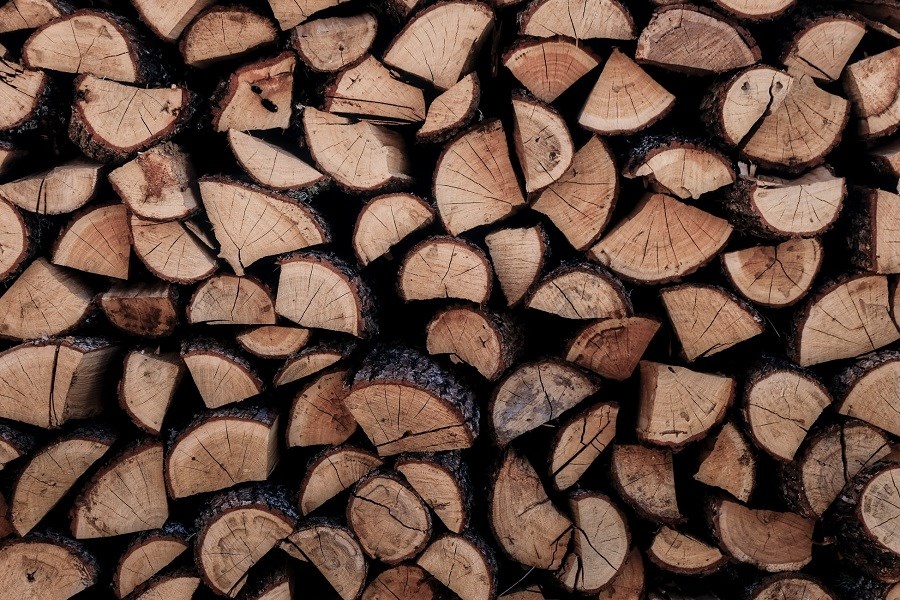
Relentless home renovation and home building boom have been sending lumber prices to record highs this year. Pandemic restrictions, which have kept people homebound, coupled with low interest rates, have fuelled demand for forestry products on both sides of the U.S./Canada border and beyond.
The U.S. industrial production index for wood stood above 134 in April, staging a sharp rebound from 111 at the depth of the pandemic-led economic swoon in April 2020, according to the Board of Governors of the Federal Reserve System. In a similar trend north of the border, lumber production in Canada has been robust over the last year, save for a brief dip in April 2020.
Leading providers of lumber products are taking advantage of the explosive demand for their goods and services. Moreover, as the wood prices continue to hit new highs, the following loggers could ring up an oversized profit windfall on the back of record earnings they have been clocking this year.
|
West Fraser Timber Co. Ltd. |
||
|
Ticker |
||
|
Current yield: |
.88% |
|
|
Forward P/E: |
3.03 |
|
|
Price |
$93.00 |
|
|
Fair value: |
Under review |
|
|
Data as of May 25, 2021 |
||
Canadian lumber giant West Fraser Timber (WFG) produces wood panels and pulp products. The Vancouver-based logger is one of the largest softwood lumber producers in the world, with over 7 billion board feet of production capacity in western Canada (63% of the total) and the Southeastern United States (37%). The firm’s panel business produces plywood, medium-density fiberboard, and laminated veneer lumber.
Although it exports large volume to China (12% of total sales in 2019), North American homebuilding and remodelling remain West Fraser's key end markets. “West Fraser faces profit volatility depending on the health of the U.S. housing market,” says a Morningstar equity report, which forecasts U.S. housing starts to rise to roughly 1.4 million units by 2024 as demand rises and households form.
The report forecasts strong profits in the near term for West Fraser's lumber and panel businesses (about 80% of revenue). After its $4 billion takeover of rival Norbord Inc earlier this year, West Fraser became the world's largest structural panel producer.
However, easing of the short-term supply constraints in 2021 would put pressure on lumber and panel adjusted EBITDA, “leading to narrower margins despite increased homebuilding,” cautions Morningstar equity analyst Charles Gross.
The company’s recent quarterly report, its first since the Norbord acquisition, shows the combined entity generated US$665 million in earnings, on US$2.3 billion in sales, in the first three months of 2021, up from US$9 million in earnings on sales of US$890 million for the same period in 2020.
|
Canfor Corp |
||
|
Ticker |
||
|
Current yield: |
- |
|
|
Forward P/E: |
2.69 |
|
|
Price |
$29.55 |
|
|
Fair value: |
Under review |
|
|
Data as of May 25, 2021 |
||
Another Canadian lumber heavyweight, Canfor (CFP) operates throughout North America, with mills in British Columbia, Alberta, and the Southeastern U.S.
One of the largest softwood lumber producers in the world, Canfor boasts about 7 billion board feet of production capacity in western Canada, the southeastern U.S. and Sweden. North American homebuilding and remodelling markets make up the bulk of the firm’s revenue, although Canfor does export significant volume to China, which has accounted for roughly one-fourth of sales in recent years.
The lumber major is well-positioned to benefit from the uptick in residential construction, supported by favourable demographics, a tighter labour market, and looser mortgage availability, factors that would underpin U.S. homebuilding activity over the coming decade.
“As price-takers, Canfor and peers see dramatic profit variations depending on the health of the U.S. housing market,” says a Morningstar equity report, which forecasts U.S. housing starts to soar to a demographically sustainable 1.6 million units annually by 2025.
Residential construction accounts for about 85% of revenue. “We see segment EBITDA rising in the coming years amid increased homebuilding activity,” says Gross.
The company reported record first-quarter operating income of $603 million, on quarterly sales of $1.94 billion, driven by historically high lumber prices and improved global pulp market conditions.
Canfor has been reinvesting in its business prompted a housing recovery. “Canfor purchased lumber capacity in the Southeastern U.S., amplifying its exposure to a housing upturn,” says Gross, adding that the move also diminishes the firm’s reliance on western Canadian mills, thereby reducing Canfor's exposure to U.S. tariffs.
|
Louisiana-Pacific Corp |
||
|
Ticker |
||
|
Current yield: |
0.98% |
|
|
Forward P/E: |
9.11 |
|
|
Price |
US$65.78 |
|
|
Fair value: |
Under review |
|
|
Data as of May 25, 2021 |
||
Louisiana-Pacific (LPX) is primarily an oriented strand board (OSB) producer while offering engineered wood siding and wood products used in home construction. The firm is the second-largest manufacturer of OSB, which makes up roughly half of its sales and EBITDA.
The lumber juggernaut is largely exposed to the North American housing market where it has nearly 5.9 billion square feet of capacity but also has a significant presence in Brazil and Chile, where it has 700 million square feet of OSB capacity and is the only major OSB producer in the region.
Louisiana-Pacific also produces many siding products – it has 1.8 billion square feet of siding capacity – which it sells under SmartSide and CanExel brands.
“U.S. homebuilding and remodelling are Louisiana-Pacific's principal end markets,” says a Morningstar equity report, adding that the company benefits from a long-term secular trend conspired by favourable demographics, higher employment numbers, and easy mortgage availability which are expected to fuel homebuilding activity in the coming decade.
As a result, the siding segment is poised to see strong growth in sales and margins. “We expect solid market share gains for SmartSide, as it is one of the more durable low-cost siding options,” says Gross, who forecasts siding EBITDA to rise above US$300 million by 2023.
The siding segment provides the added benefit of more consistent cash flow, as sales rely less on housing starts and “SmartSide appealing to higher-end homebuilders,” he adds.
Gross projects OSB segment EBITDA to gradually rise, as the housing cycle turns in Louisiana-Pacific's favour.























